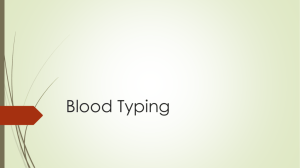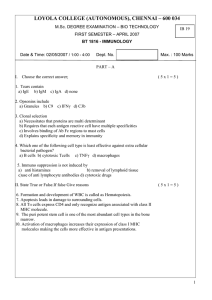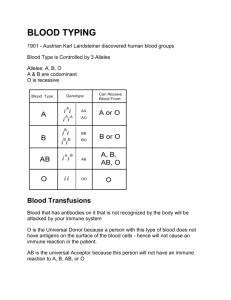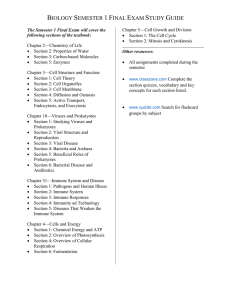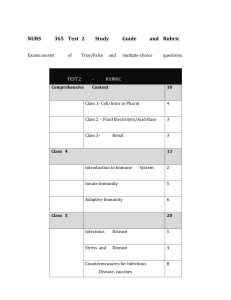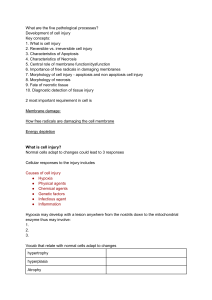LOYOLA COLLEGE (AUTONOMOUS), CHENNAI – 600 034
advertisement
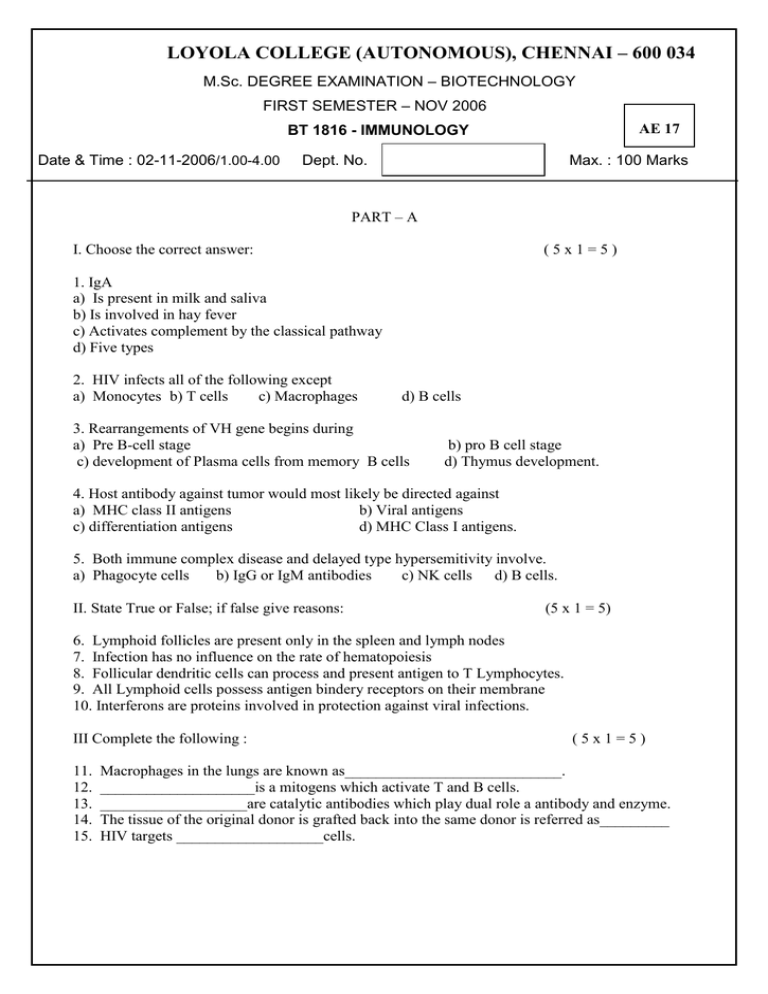
LOYOLA COLLEGE (AUTONOMOUS), CHENNAI – 600 034 M.Sc. DEGREE EXAMINATION – BIOTECHNOLOGY FIRST SEMESTER – NOV 2006 AE 17 BT 1816 - IMMUNOLOGY Date & Time : 02-11-2006/1.00-4.00 Dept. No. Max. : 100 Marks PART – A I. Choose the correct answer: (5x1=5) 1. IgA a) Is present in milk and saliva b) Is involved in hay fever c) Activates complement by the classical pathway d) Five types 2. HIV infects all of the following except a) Monocytes b) T cells c) Macrophages d) B cells 3. Rearrangements of VH gene begins during a) Pre B-cell stage c) development of Plasma cells from memory B cells b) pro B cell stage d) Thymus development. 4. Host antibody against tumor would most likely be directed against a) MHC class II antigens b) Viral antigens c) differentiation antigens d) MHC Class I antigens. 5. Both immune complex disease and delayed type hypersemitivity involve. a) Phagocyte cells b) IgG or IgM antibodies c) NK cells d) B cells. II. State True or False; if false give reasons: (5 x 1 = 5) 6. Lymphoid follicles are present only in the spleen and lymph nodes 7. Infection has no influence on the rate of hematopoiesis 8. Follicular dendritic cells can process and present antigen to T Lymphocytes. 9. All Lymphoid cells possess antigen bindery receptors on their membrane 10. Interferons are proteins involved in protection against viral infections. III Complete the following : 11. 12. 13. 14. 15. (5x1=5) Macrophages in the lungs are known as____________________________. ____________________is a mitogens which activate T and B cells. ___________________are catalytic antibodies which play dual role a antibody and enzyme. The tissue of the original donor is grafted back into the same donor is referred as_________ HIV targets ___________________cells. IV Answer the following questions, each in about 50 words. 16. 17. 18. 19. 20. (5x1=5) Explain the term adjuvant Define Mitogen. What are the major types of immunity? Define Haptens. Write notes on TH cells. PART – B V Answer any FIVE of the following questions, each in about 350 words 21. 22. 23. 24. 25. 26. 27. 28. ( 5 x 8 = 40 ) Explain the structure and functions of the lymph node. Write the importance of major histo compatibility complex. What are the immune responses to bacterial infection? What is meant by clonal selection theory? Write the immunologic basis of graft rejection. Explain light and heavy chain gene arrangements in B cell DNA. How does type I hypersensitive reactions take place? What are the physical barriers against different microbes? PART-C VI. Answer the following questions, each in about 1500 words: ( 2 x 20 = 40 ) 29. a) What is innate immunity? Give detailed account of immunogenic innate immune response. (Or) b) Give a details account of mode of viral infection and explain how immune response develops against viral infection. 30. c). Explain alternative complement pathway and complement deficient diseases. (Or) d). Draw the structure of Ig molecules and explain its gene arrangements. __________________
